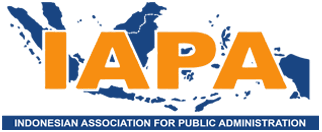The Evaluation of Indonesian National Standardization (SNI) Policy towards Import in Steel Industry
DOI:
https://doi.org/10.21776/ub.jpas.2017.002.02.1Keywords:
Non-tariff barrier, SNI policy, steel productAbstract
The Indonesian government enacted a mandatory national standardization (Standar Nasional Indonesia, SNI) policy for deformed steel bars in 2008. This policy provides the assurance of supplying safe and reliable products for consumers especially in the construction sector. At the same time, the SNI policy can create non-tariff barrier to trade as it raises the cost of compliance. While tariffs are being increasingly eliminated, the government may choose to use standardization as a tool to protect national industries. This paper analyzes the effect of SNI policy as technical barriers on import values using an auxiliary gravity model. This paper applies panel data on steel imports to Indonesia from the eight major exporting countries between 2000 and 2014. The results of the gravity model reveal a negative impact of the SNI policy on the steel import value in Indonesia across all eight main exporters. The findings support the commonly held view that national standards are an impediment to trade.References
Adam, L., & Negara, S. D. (2012). The Development of Indonesia Steel Industry. Review of Indonesian Economic and Business Studies Vol 3 No 2, pp 51-67.
Adams, R. J. (2006). Reasons for Steel Price Increases and Impact on the Agricultural Machinery Industry. Agricultural Engineering International: the CIGR Journal , pp 699-705.
Anders, S. M., & Caswell, J. A. (2009). Standards as Barriers versus Standards as Catalysts: Assessing the Impact of HACCP. American Journal of Agricultural Economics Vol 91 No 2, pp 310-321.
Bao, X., & Qiu, L. D. (2012). How Do Technical Barriers to Trade Influence Trade. Review of Intenational Economics 20(4), pp 691-706.
Blonigen, B. A., Liebman, B. H., & Wilson, W. W. (2007). "Trade Policy and Market Power: The Case of the US Steel Industry" NBER Working Paper Series . Cambridge: National Bureau of Economic Research.
Brenton, P., Sheehy, J., & Vencauteren, M. (2001). Technical barriers to Trade in the European Union: Importance for Accession Countries. Journal of Common Market Studies , Vol 39, No 2, pp 265-84.
Brun, L. (2016). Overcapacity in Steel: China's Role in Global Problem. Washington: Social Science Research Institute.
Chen, M. X., Otsuki, T., & Wilson, J. S. (2006). "Do Standards Matter for Export Success?." Policy Research Working Paper No. 3809. Washington: World Bank.
Essaji, A. (2008). Technical Regulation and Specialization in International Trade. Journal of International Economics, Vol 76, pp 166-76.
Feinberg, R. M. (2010). "Trends and Impact of India's Antidumping Enforcement" Office of Economics Working Paper No 2010-10A. Washington: U.S. International Trade Comission.
Giddens, A. (1990). The Consequence of Modernity. Cambridge: Polity Press.
Jaffe, S., & Henson, S. (2004). "Standards and Agro-Food Exports from Developing Countries: Rebalancing the Debate" Policy Research Working Paper No 3348. Washington DC: World Bank.
Jorgensen, J. G., & Schroder, P. J. (2006). Technical Barriers, Import License and Tariffs as Means of Limiting Market Access. Journal of Economic Integration, pp 120-146.
Krugman, P., Obstfeld, M., & Melitz, M. (2012). International Economics (9th Edition). Boston: Pearson Education.
London Metal Exchange. (n.d). Steel Proce. Retrieved March 21, 2017 from http://lme.com
Love, P., & Lattimore, R. (2009). "Protectionism? Tariffs and Other Barriers to Trade" OECD Insight: International Trade. Paris: OECD Publishing.
Maskus, K., Otsuki, T., & Wilson, J. (2005). "The Cost of Compliance With Product Standards for Firms in Developing Countries" Policy Research Working Paper 3590. Washington: World Bank.
MOI. (2015). Logam Dalam Angka. Jakarta: Ministry of Industry of Republic of Indonesia.
Moore, M. E. (1996). The Political Economy of Trade Protection. Chicago: University of Chicago Press.
Oguledo, V., & Macphee, C. (1994). Gravity Models: A Reformulation and An Application to Discriminatory Trade Arrangements . Applied Economics, Vol 26, pp 107-20.
Peridy, N., Guillotreau, P., & Bernard, P. (2000). The Impact of Prices on Seafood Trade: A Panel Data Analysis of The French Seafood Market. Marine Resource Economics , Vol 15, pp 45-66.
Propescu, G. H., Nica, E., Nicolaescu, E., & Lazaroiu, G. (2016). China's Steel Industry As A Driving Force for Economic Growth and International Competitiveness. Matallurgy Vol. 55 No 1, 123-126.
Sato, H. (2009). The Iron and Steel Industry in Asia: Development and Restructuring. IDE Discussion Paper Vol. 210. Tokyo: IDE-Jetro.
Sujarwoto, S. (2012). Political decentralization and local public services performance in Indonesia. Journal of Public Administration and Governance, 2(3), 55-84
Sujarwoto, S., & Tampubolon, G. (2016). Spatial inequality and the Internet divide in Indonesia 2010–2012. Telecommunications Policy, 40(7), 602-616.
Sujarwoto, S., & Nugroho. Y. (2011). Decentralization and government online networking in Indonesia. Center for Development Informatics, University of Manchester.
Swann, G. M. (2010). International Standards and Trade: A Review of The Empirical Literature. Paris: OECD.
Swann, P., Temple, P., & Shurmer , M. (1996). Standard and Performance: The UK Experience . The Economic Journal, Vol 106, pp 1297-312.
Tambunan, T. (2011). The Impacts of Trade Liberalization on Indonesia Small and Medium Entreprises. Manitoba: International Institute for Sustainable Development.
Tampubolon, B. D., Eminingsih, & Suseno, H. (2006). The Evaluation of SNI Policy Implementation on Deformed Steel Bar (Evaluasi Penerapan SNI Baja Tulangan Beton). Jurnal Standardisasi Vol 9 No 1, 10-19.
UN Comtrade. (n.d). Steel Imports. Retrieved March 11, 2017 from http://comtrade.un.org
World Steel Association. (2015). Indirect Trade in Steel. Brussels: World Steel Association
World Steel Association. (2017). World Steel in Figures 2017. Brussels: World Steel Association
WTO. (2008). The Legal Text The Result of Uruguay Round of Multilateral Trade Negotiation, Annex I Agreement to Technical Barrier to Trade.Geneva: WTO.
Zarzoso, M. (2003). Gravity Model: An Application to Trade Between Regional Blocs. Atlantic Economic Journal, 174-87
Downloads
Published
Issue
Section
License
Copyright Statement
Authors who publish with JPAS agree to the following terms:
(1). Authors retain copyright and grant the journal right of first publication with the work simultaneously licensed under a Creative Commons Attribution License that allows others to share the work with an acknowledgement of the work's authorship and initial publication in this journal.
(2). Authors are able to enter into separate, additional contractual arrangements for the non-exclusive distribution of the journal's published version of the work (e.g., post it to an institutional repository or publish it in a book), with an acknowledgement of its initial publication in this journal.
(3). Authors are permitted and encouraged to post their work online (e.g., in institutional repositories or on their website) prior to and during the submission process, as it can lead to productive exchanges, as well as earlier and greater citation of published work (See The Effect of Open Access).
Permissions and reuse
For authors
Authors may use their own articles for the following non-commercial purposes without asking our permission (and subject only to acknowledging first publication in JPAS and giving a full reference or web link, as appropriate).
(1). Posting a pdf of their own article on their own personal or institutional website, for which no charge for access is made.
(2). Making a reasonable number of copies for personal or non commercial professional use.
This includes the contributors own teaching purposes.
(1). Republishing part or all of the article in a book or other publication edited by the author (except for multiple contributions in the same book or publication, for which permission needs to be sought.
(2). Using individual figures or tables or extracts of text (up to 300 words) in other publications published by a third party.
(3). Using the article in a course pack or compilation (whether paper or electronic) in the authors institution. This does not apply if a commercial charge is made for the compilation or training programme.
For third parties
All articles published by JPAS are published by default as open access.















